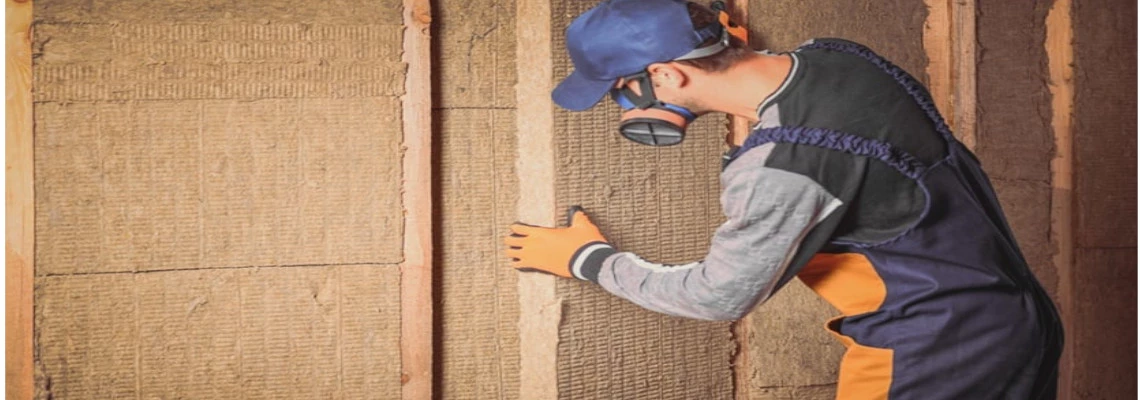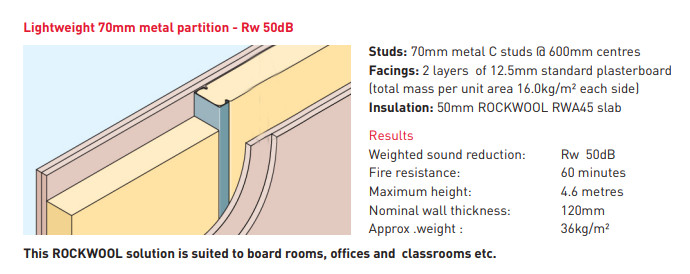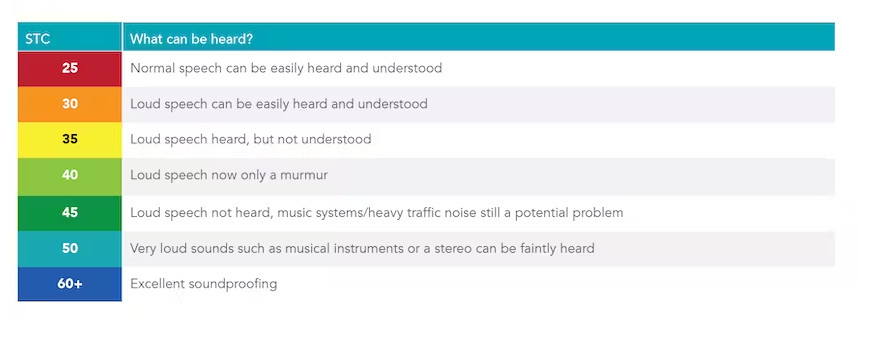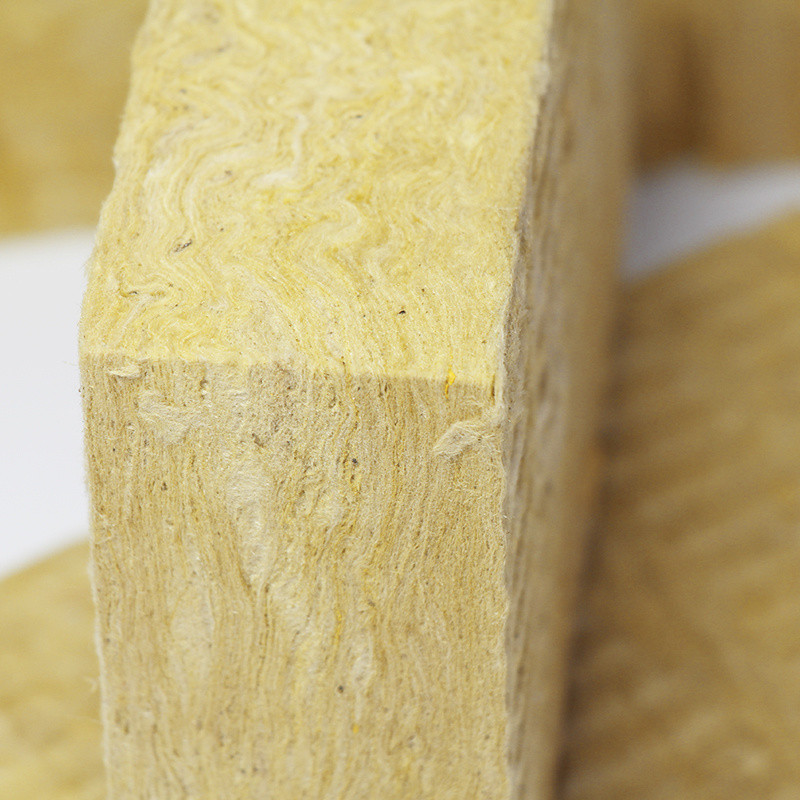
UNDERSTANDING THE LIMITATIONS OF ROCKWOOL FOR SOUNDPROOFING*
The sounds from a neighbour's apartment, external noise from the street, noise generated by technical equipment in a building, or even our own children, who scream and love to listen to loud music - we know these sounds very well. On the other hand, annoying noise in the workplace, even if it is at a low level, can cause a permanent feeling of fatigue, concentration problems, or sleep disturbances.
The extent to which proper sound insulation affects our efficiency and sense of happiness may be surprising to many - experts from the World Health Organization argue that noise harms us as much as toxic chemicals! Is there any way to protect ourselves from noise? Of course! Acoustic insulation made of ROCKWOOL mineral wool is an excellent solution that makes your home a place of true relaxation, peace, and silence.
In this article, we will try to answer the question of whether this wool is good and how good it is for acoustic insulation.
WHAT MAKES ROCKWOOL INSULATION SO SPECIAL?
To answer this question, let's first ask how ROCKWOOL insulation is constructed and why it's so popular for soundproofing rooms.
The structure of ROCKWOOL insulation is composed of layers that are stacked on top of each other, with each layer absorbing sound to an increasingly greater degree. It's similar to building a room within a room, where each chamber acts as a barrier for sound. With the right configuration, the sound becomes weaker and almost impossible to hear.
Rockwool glass fibres are arranged in layers, and the more compressed they are, the denser the material becomes. In simpler terms, it contains more structures per 1 cm thickness of the material.
Rockwool perfectly absorbs sound, thanks to its open, porous structure. It isolates noise and suppresses echoes and vibrations. For instance, when used as roof insulation, it reduces the audibility of rain sounds by 50%.
ROCKWOOL SOUND ABSORPTION
Sound absorption is the most important parameter when choosing insulation material that is intended to effectively soundproof offices. The sound absorption coefficient is denoted by the symbol (αw). The higher it is, the better the insulation absorbs sound. It has values from 0 (indicating complete sound reflection) to 1 (complete absorption). Depending on the value of this parameter, an appropriate class is assigned:
Class A sound absorption means that the material has a coefficient (αw) from 0.90 to 1.00
Class B sound absorption - the coefficient (αw) is from 0.80 to 0.85
Class C sound absorption means that the material has a coefficient (αw) from 0.60 to 0.75
Class D sound absorption - the coefficient (αw) is from 0.30 to 0.55
Class E sound absorption is the lowest and means that the material has a coefficient (αw) only from 0.15 to 0.25
As for rockwool mineral wool, it absorbs sound perfectly. Its coefficient (αw) ranges from 0.8 to even 1.0!

Picture credit:peroni.com
ROCKWOOL SOUND INSULATION dB RATING
The Rw index is significant for assessing the acoustic insulation of partitions. It measures the specific insulation of the partition against airborne sound and is determined in laboratory conditions. The unit is the decibel (dB).
When using insulation made of rock wool, the acoustic insulation of layered panels is Rw = 32 ±2 dB. In turn, for internal partitions in drywall systems, it can even reach Rw = 81 dB.
ROCKWOOL RWA45
According to the datasheet, Rockwool 50mm RWA45, which has a density of 45kg/m3, can reduce noise by Rw = 50dB. This requires the use of 70mm metal partition studs and the application of 2 layers of 12.5mm gypsum boards on each side of the wall.

ROCKWOOL RW3
Studies have also shown that the Rockwool RW3, which has a density of 60kg/m3 and a thickness of 30mm, can reduce noise by Rw = 41-44dB assuming that the wall is constructed with metal partition studs with a thickness of 50mm and covered on both sides with one layer of gypsum boards with a thickness of 12.5mm, resulting in a nominal wall thickness of 75mm (with a wall height of 2.5m).
Generally speaking, a well-constructed wall using rockwool insulation can reduce noise transmission by more than 40dB, however it is important to consider the entire construction system, including the thickness of the walls, the use of metal partition studs, and the number of layers of gypsum boards.
ROCKWOOL vs STC RATINGS
According to Wikipedia the STC or sound transmission class is a single number method of rating how well wall partitions reduce sound transmission. In other words STC gives you a rough idea of how much sound a wall, for example, might stop.
A higher number indicates more effective sound insulation than a lower number.
For instance, Rockwool can improve the STC (Sound transmission class) by 5-8 points, which means that it can reduce sound by 5dB-8dB.
When put inside a typical interior wall with 12.5mm of drywall on either side, which has an STC rating of 34 on its own, adding rockwool insulation will increase that STC rating to 45, which is a very noticeable difference.
TIP
One sheet of drywall will provide you with a significant reduction in noise, but the best way to go about it is to install two layers of 12.5mm drywall. Rockwool materials will settle over time and a gap might form at the top, which lets sound through. So, make sure to get the highest density possible to avoid this issue.
To enhance the soundproofing performance of your wall, it's recommended to use a noiseproofing compound such as rock wool in between two layers of soundproofing materials. This creates an air pocket that further improves the insulation and helps to achieve a higher Sound Transmission Class (STC) rating of around 35 to 40. Essentially, this means that the amount of noise transmitted through the wall is reduced by approximately 35dB to 40dB, making sounds like loud speech unintelligible.

Picture credit:rockwool.com
NOISE vs UK BUILDING REGULATIONS
In England and Wales, Approved Document E requires all internal walls between a bedroom or room containing a WC and another room to have a minimum sound insulation of 40 Rw dB. This applies to new walls built both in dwellings formed by a material change of use and new build extensions of existing dwellings. (For Scotland, the minimum sound insulation requirement is 43 Rw dB).
CONCLUSION
In conclusion, Rockwool is a highly effective material for reducing airborne noise and creating a more acoustically controlled environment. Its non-directional fibers make it ideal for use in various applications, such as music studios, home theaters, and office spaces. However, on its own, Rockwool is not an effective material for soundproofing. While it can reduce sound transmission by 5dB to 8dB, it should be combined with other sound-insulating materials, such as drywall or mass loaded vinyl, to achieve better soundproofing results.
While Rockwool is marketed as the best solution for sound insulation needs, it should be used in conjunction with other sound-blocking materials. Installing a noiseproofing compound between two layers of Rockwool and drywall, for example, can create a slight air pocket to further increase insulation and reduce noise by up to 35dB-40dB. By understanding the limitations and strengths of Rockwool, professionals in the acoustics industry can make informed decisions on how to best use it in their projects.
Related articles:
ROCKWOOL INSULATION: IS IT SAFE FOR YOU AND YOUR HOME?
MINERAL WOOL INSULATION. THE UGLY TRUTH?
HOW TO CUT FIBREGLASS INSULATION
FOIL INSULATION: TO GAP OR NOT TO GAP? THAT IS THE QUESTION!
UNFACED INSULATION. CHANGE BEFORE YOU HAVE TO!
*All the information provided in the content published on Insulationgo blog is for informational and educational purposes only. Insulationgo LTD makes every effort to ensure the accuracy and timeliness of the content, but we do not assume any responsibility for any errors or omissions.
The information presented on this blog should not be considered as professional advice or a substitute for consulting relevant experts. Before making any purchase decisions or taking action based on the information presented here, it is strongly recommended to contact the product manufacturer directly to verify the details and ensure its suitability for your specific needs.
By using this blog, you acknowledge and agree that Insulationgo LTD shall not be held liable for any damages, losses, or inconveniences arising from the use or reliance on the information provided herein. This limitation of liability applies to all users of the blog, including but not limited to visitors, readers, and subscribers.












































































































